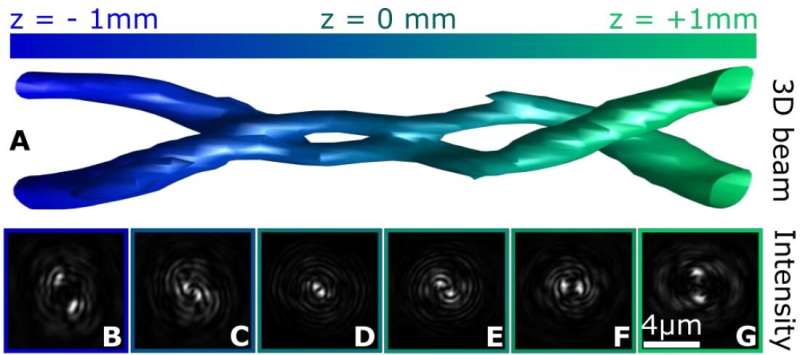Researchers report on helical soft-X-ray beams

Controlling the properties of light is of great importance for many areas of physics, including imaging and nanolithography. But for short wavelengths, such as soft X-ray radiation, such control over the phase of light has remained elusive.
In a paper published in Science Advances on Friday, 14 February, ARCNL researchers Lars Loetgering and Stefan Witte, together with colleagues from Germany and the U.S., reported on a method that enables the generation of soft X-ray beams with controlled orbital angular momentum (OAM). OAM is a property of light in which the phase of a light beam rotates around the beam axis. The ARCNL team now demonstrates that by inserting a specially designed structure into the beam path, the light can be diffracted in such a way that its OAM properties are modified. Being able to control the OAM of light is an important first step that will give researchers access to the angular structure of the soft-X-ray beam.
Loetgering et al used this new method to generate so-called helical beams of soft-X-ray radiation, in which the intensity distribution of light rotates around its axis upon propagation. They employed a special imaging approach called ptychography to characterize the intensity and phase properties of these helical beams in great detail. Furthermore, they demonstrated the potential of these special beams for high-resolution microscopy by using them to image a cross-section of an integrated circuit at 30 nanometer spatial resolution.
More information: Lars Loetgering et al. Generation and characterization of focused helical x-ray beams, Science Advances (2020).
Journal information: Science Advances
Provided by Advanced Research Center for Nanolithography




















